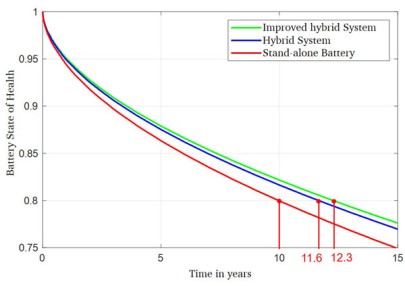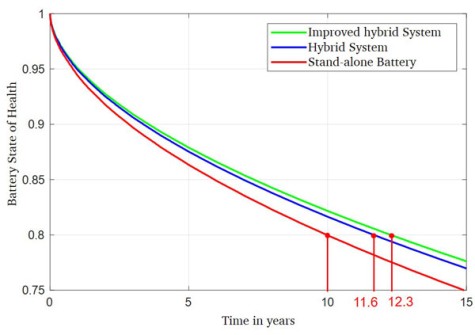In this combined system, the kinetic energy storage plays the role of the short-term energy storage, while the electrochemical storage plays the role of the long-term energy storage. The later results in advantages for the electrochemical energy storage, in terms of service life and dimensioning, since potentially harmful load components are covered by the kinetic energy storage. The kinetic energy storage shows in turn a much higher cycle life.
Essential for the efficient use of hybrid energy storages are appropriate operating strategies, which determine among others the dynamic load sharing between the storages. The IMS employs frequency dependent and rule-based operating strategies for the hybrid energy storages. Operating strategies based on nonlinear optimization and the subsequent training of a neural network are also investigated in simulations. The optimization algorithm aims to minimize the energy losses as well as the aging of the hybrid energy storage.





